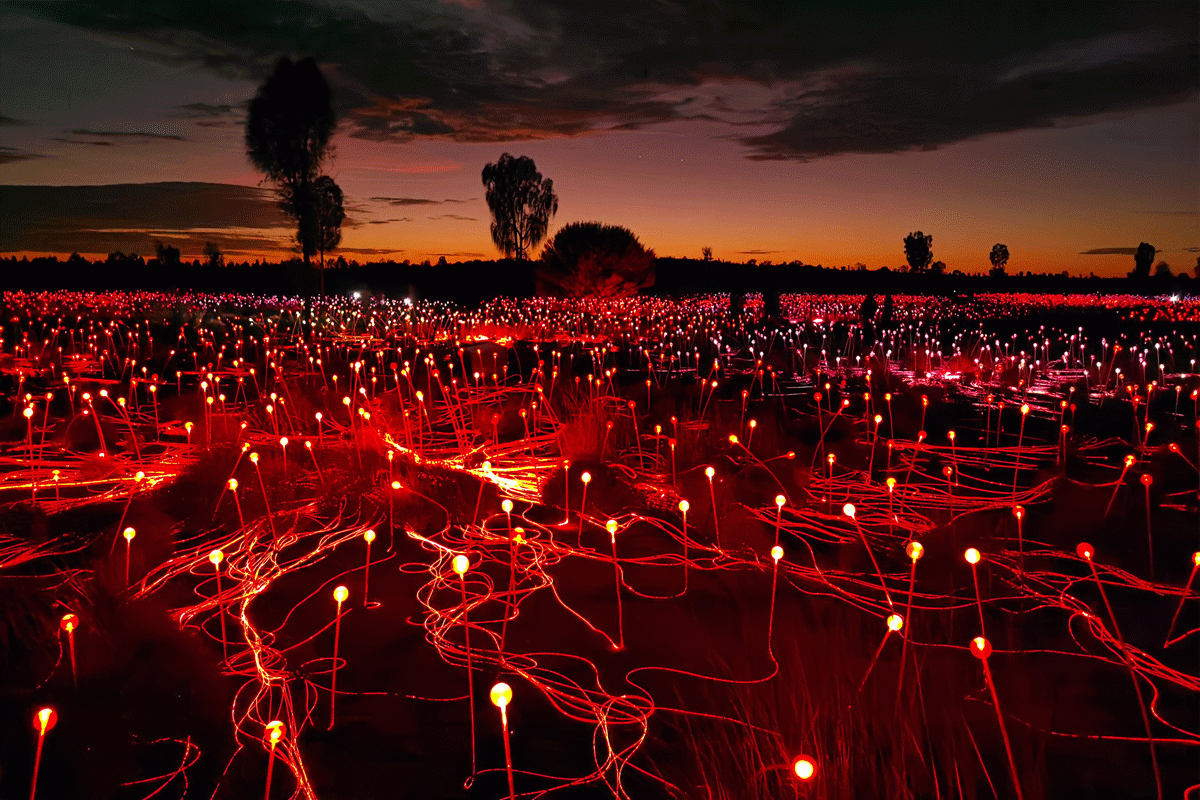Huawei of the future: Why tech brands are splashing cash to create online hype


Uluru's Field of Lights photographed at sunrise using the new Huawei phone. Photo: Getty Images for Huawei
From the star-studded launch of Apple’s streaming platform to Huawei’s lavish unveiling of its latest phone in Paris, tech companies are playing a high-stakes game of one-upmanship to engineer social media hype before product launches.
While companies attempting to garner positive media coverage is nothing new, the lengths big brands – particularly in the cut-throat consumer tech market – will go to in the hopes of going viral are reaching new heights.
Telecommunications giant Huawei brushed off a spate of recent controversy to unveil its flagship P30 and P30 Pro smartphones in Paris on Tuesday, in front of an audience of international journalists and social media influencers flown in for the event.
In Australia, a similar select group was flown to the Northern Territory to test out the phone’s “unparalleled” photo and video capabilities on the Red Centre’s scenery.
The trip resulted in a slew of spectacular snaps and blogosphere fanfare.

Uluru at sunrise. Photo: Getty Images for Huawei
The New Daily also understands that Huawei offered to fly Australian journalists to London for a separate event earlier this year.
Huawei is the world’s third-largest smartphone maker but remains a relative minnow in Australia.
The firm accounts for just over 5 per cent of the smartphone market behind Samsung (21.2 per cent) and the world’s most valuable public company Apple (60.2 per cent).
With the launch of its P30 series, Huawei is looking to directly challenge Apple’s stranglehold over the market of design and photography-centric smartphones.
It features “groundbreaking” cameras designed by Leica, a cult favourite among photography enthusiasts.
The P30 series’ photo and video technology signals “a fundamental breakthrough after decades of digital camera technology development,” Huawei chief executive of consumer Richard Yu said.
“[It] will set the pace for the next generation of smartphones by empowering people to capture the true beauty of the world around them through a device that fits in the palm of their hands,” he said.
‘Grey area’ around social media ‘influencers’
Endorsements from social media stars – so-called ‘influencers’ – with large followings can be hugely valuable to companies trying to appeal to younger audiences.
While traditional media outlets are required to differentiate between editorial and advertising content, things aren’t always as clear cut when it comes to social media ‘influencers’.
Some steps have been taken to regulate social media advertising, but the lines between “authentic” endorsements and paid advertising have become blurred, PR agent and former journalist Nicola Patterson said.
Ms Patterson said many Instagram influencers could live lavish lives “without getting paid cash”.
Instead, PR perks, such as free meals at fine dining restaurants, holidays and tech products, have become a currency in their own right.
Instagram’s army of ‘micro-influencers’
Word of mouth and viral marketing has become indispensable for brands pitching products to millennials, University of Melbourne digital marketing expert Brent Coker said.
It’s not only celebrities with millions of Instagram followers – ‘mega-influencers’ – that are cashing in, but also a willing army of ‘micro-influencers’.
Micro-influencers are “not famous, but have a lot of followers”, Dr Coker said.
Followers feel a sense of connection with such figures and it’s that sense of authenticity – real or manufactured – that brands view as valuable.
“Millennials are fairly sophisticated and know what’s going on and know that these mega-influencers are getting paid,” Dr Coker said.
Brands nowadays realise the power of micro-influencers and getting them to endorse the product.”
Splashing cash on luxury events and inviting micro and mega-influencers along for the ride is key to generating hype around a product, Dr Coker said, pointing to the social media-fuelled Fyre Festival disaster as “the textbook case study on this topic at the moment”.
“People want to be part of something and not miss out, so that draws people in. But people also like this sort of idea of ‘the dream experience’,” he said.
Consumer tech companies have taken note of the power social media identities have over their legions of followers, and are harnessing it to sell products.
“People form impressions about brands through associations,” Dr Coker said.
“When they think about a brand, certain thoughts and feelings come to mind, and brands want to shape those feelings.”








